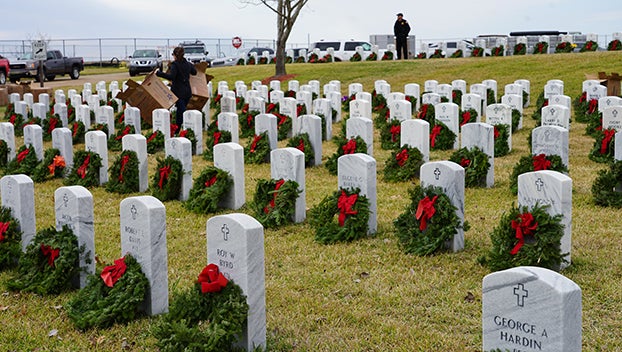Local leaders say one of Natchez’s biggest problems is fighting blight
Published 12:09 am Sunday, May 24, 2015
NATCHEZ — Speckled between Natchez’s pristine antebellum houses are a few eyesores — blighted properties.
City code defines these properties as “any structure, or part of any structure, which, because of disrepair, fire, wind or other natural disaster or physical deterioration, is no longer habitable.”
Natchez Mayor Butch Brown said blighted properties could be described in three words, though — a big problem.
“It’s a real problem, and it’s unfair to the adjacent landowners,” Brown said. “It condemns the value of the surrounding property and neighborhoods.”
Currently, Natchez has 57 officially listed as blighted properties.
Of those properties, 17 are in Ward 1, 39 in Ward 2 and one in Ward 4.
Ward 1 Alderwoman Joyce Arceneaux-Mathis said since 1996, she has documented several “repeat offenders” throughout Ward 1 who continually let their properties fall into disrepair.
Specifically, she said areas of North Wall Street between Madison and Oak streets are in dire need of attention.
“It’s a quality of life issue,” Arceneaux-Mathis said.
She said a dwindling population is also at least partially to blame.
“I think we’ve had more people to leave the city of Natchez, or people die, and properties are left in disarray. The other situation is that there are a lot of properties that go over to the state, and the state won’t clean up its own property.”
The only way to tackle Natchez’s blighted houses problem, Arceneaux-Mathis said, is to get rid of them — literally.
The price and process to demolish blighted houses
Currently, Brown said the city is looking to demolish several blighted properties.
Most of those properties, he said, are concentrated on Martin Luther King, Maple and Watkins streets.
Those properties would be the first the city demolished this year.
“The way we’re going to pay for it, is we have money budgeted in the inspections department, $31,000,” Brown said.
Instead of hiring outside contractors to demolish the houses, Brown said the Natchez Office of Inspections would transfer funds, on a case-by-case basis, to the city’s public works department, that would then carry out the demolition.
Brown also said the board recently voted to expand that $31,000 budget to allow for more demolitions.
“We’re going to take money out of one pocket and put it in another,” Brown said.
Ward 4 Alderman Tony Fields said he would like to see those funds transferred sooner rather than later.
“We need to get these things in stone and taken care of,” Fields said. “We need a good plan for getting these dilapidated houses down.”
Natchez Code Enforcement Officer Anita Smith said the process of getting these properties demolished is lengthy.
First, Smith said the mayor and aldermen need to determine a budget for demolition. Then, ward representatives identify which properties take priority for demolition.
And Smith said the list of blighted houses is only growing.
“I don’t know if it’s lack of jobs or poor school systems, but the population is dwindling,” Smith said. “And with that, these homes are being left behind.”
Once priority properties are identified, Smith said owners are contacted and given 30 days to respond.
If the owner doesn’t respond, which Smith said often happens, then the property is presented during an aldermen meeting and a proposal is made to move the property onto a list of houses that the city intends to demolish.
Typically, Smith said it costs the city $5,000 to demolish a blighted house.
“It’s much cheaper for the homeowner to demolish the property than for the city to do it,” Smith said.
Also, Smith said the city has had problems with collecting tax money from liens placed on blighted properties.
“If they don’t pay their taxes in three years, then the property goes to the state of Mississippi,” Smith explained. “Then, they can give the property back to Natchez, or sell it at an auction.”
In 2014, Smith said she guessed between the city and homeowners, 10 blighted properties were demolished.
However, 2015 has seen no demolitions yet, Smith said.
“I don’t know if it’s because of budget reasons or what,” she said.
From the day a property is deemed blighted to the day it is demolished typically spans anywhere from 90 days to 10 years, Smith said.
Most properties wait on the demolition list because the city doesn’t have enough money, or time, to demolish them, Smith said.
Possible solutions
With the city seemingly behind on addressing blighted properties, aldermen are beginning to weigh in on new options.
Ward 6 Alderman Dan Dillard suggested the city look into purchasing blighted properties, then selling them to speed up renovation or removal.
“I’m wondering if it would be legally feasible for the city to look at these properties, contact these people, and say the city will buy these properties from you,” Dillard said. “Then, we can clean them up, mow them, then we can turn them into surplus tax and sell them.”
In response to Dillard’s proposal, Butch said he would “make a concerted effort to bring a larger discussion about what we’re going to do about adjudication” at the board’s Tuesday meeting.
“We wish we could take down 40 to 50 a year. It would greatly clean up our community,” Brown said. “We do as much as we can with the limited resources we have. We just have so many.”








